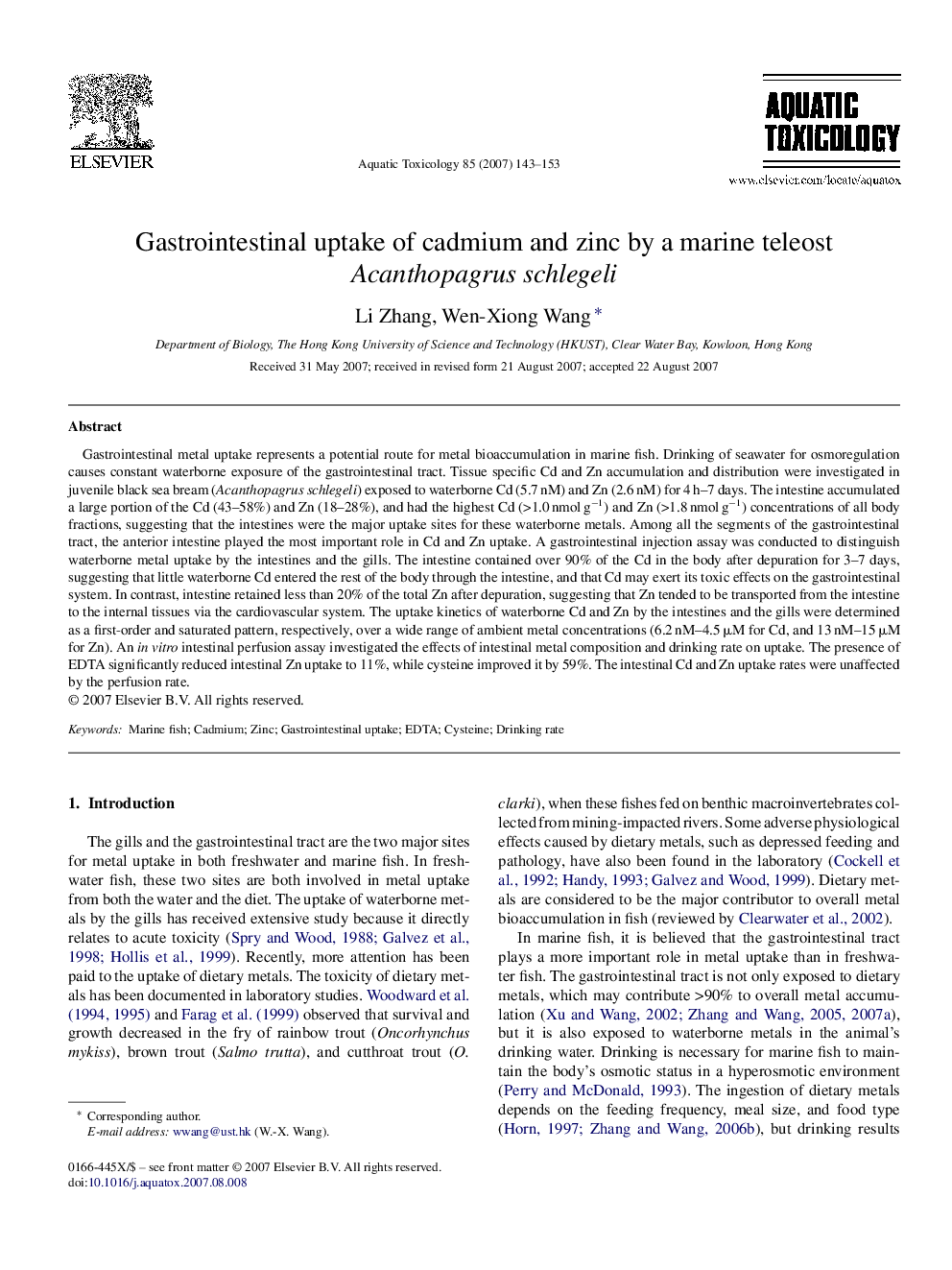| کد مقاله | کد نشریه | سال انتشار | مقاله انگلیسی | نسخه تمام متن |
|---|---|---|---|---|
| 4530981 | 1324744 | 2007 | 11 صفحه PDF | دانلود رایگان |

Gastrointestinal metal uptake represents a potential route for metal bioaccumulation in marine fish. Drinking of seawater for osmoregulation causes constant waterborne exposure of the gastrointestinal tract. Tissue specific Cd and Zn accumulation and distribution were investigated in juvenile black sea bream (Acanthopagrus schlegeli) exposed to waterborne Cd (5.7 nM) and Zn (2.6 nM) for 4 h–7 days. The intestine accumulated a large portion of the Cd (43–58%) and Zn (18–28%), and had the highest Cd (>1.0 nmol g−1) and Zn (>1.8 nmol g−1) concentrations of all body fractions, suggesting that the intestines were the major uptake sites for these waterborne metals. Among all the segments of the gastrointestinal tract, the anterior intestine played the most important role in Cd and Zn uptake. A gastrointestinal injection assay was conducted to distinguish waterborne metal uptake by the intestines and the gills. The intestine contained over 90% of the Cd in the body after depuration for 3–7 days, suggesting that little waterborne Cd entered the rest of the body through the intestine, and that Cd may exert its toxic effects on the gastrointestinal system. In contrast, intestine retained less than 20% of the total Zn after depuration, suggesting that Zn tended to be transported from the intestine to the internal tissues via the cardiovascular system. The uptake kinetics of waterborne Cd and Zn by the intestines and the gills were determined as a first-order and saturated pattern, respectively, over a wide range of ambient metal concentrations (6.2 nM–4.5 μM for Cd, and 13 nM–15 μM for Zn). An in vitro intestinal perfusion assay investigated the effects of intestinal metal composition and drinking rate on uptake. The presence of EDTA significantly reduced intestinal Zn uptake to 11%, while cysteine improved it by 59%. The intestinal Cd and Zn uptake rates were unaffected by the perfusion rate.
Journal: Aquatic Toxicology - Volume 85, Issue 2, 30 November 2007, Pages 143–153